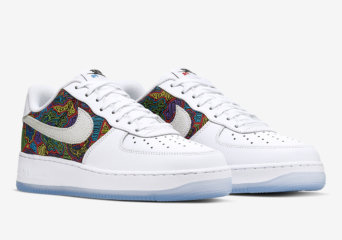- About
- Topics
- Picks
- Audio
- Story
- In-Depth
- Opinion
- News
- Donate
- Signup for our newsletterOur Editors' Best Picks.Send
Read, Debate: Engage.
| located: | Panama, Colombia, Mexico |
|---|---|
| editor: | Magdalena Rojo |
Nike recently used a design of Guna people from Panama and Colombia and named its brand-new sneakers Nike Air Force 1 'Puerto Rico'.
In response, the indigenous group from Panama raised a voice against the use of their traditional 'Mola' design without asking for permission. In Panama, the law recognises the right of indigenous peoples to their intellectual property. Nike apologised and decided to cancel the launch of its new shoes.
It is not the first, nor the only time that an international fashion house uses the traditional designs of indigenous groups to benefit from its sale. This time though, Nike was not aware of where the pattern came from. It also did not know that it is a design used only on women clothing. Nike failed to consult the indigenous group, nr did it consider the cultural context that the design comes from.
The designs of indigenous groups across Latin America often represent a lifestyle and beliefs, the connection people have to nature, and to their ancestors as well as a tool of resistance.
Julia, for example, is a 23-year-old Zapotec woman. In her village in the Mexican state of Oaxaca, traditional clothes have almost been forgotten. She studies how the traditional dress in her village looked like and searches for someone who could weave it and bring it back. Julia alone made sure that the only traditional necklace preserved from her community would not be sold. Instead, it has become an art piece exhibited in a museum. She knows everything about the fabric and materials used to make the traditional dress and she recognises which occasions are appropriate to put the necklace on. She says traditional clothes are part of her identity.
Fashion designers can draw inspiration from many different places. But using symbols from indigenous peoples' clothes to make a profit without acknowledging where they come from and without understanding their meaning is not inspiration. It is a violation of the identity of a group that the design belongs to and of its rights.
There is a difference between how a culture of indigenous people is valued and how international companies value their rights. After the incident with Nike, Mexico is now also considering passing a law that would make it easier for indigenous people to protect their culture in similar cases. While laws can help protect traditions and acknowledge the cultural heritage of indigenous communities, the mindset of corporations is key here.
The case of the new sneakers by Nike is just another example of how little respect and little recognition there still is towards indigenous cultures and beliefs.
